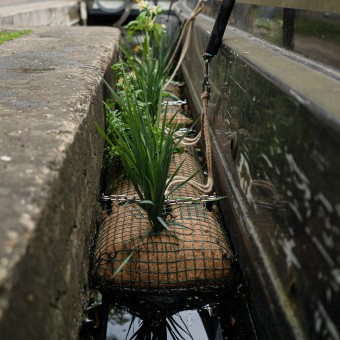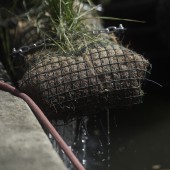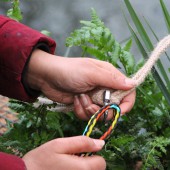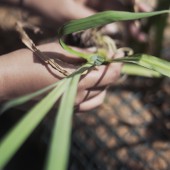Boat Biologs Bioremediating Floating Raft Gardens by Riya Kuvavala |
Home > Winners > #141435 |
 |
|
||||
| DESIGN DETAILS | |||||
| DESIGN NAME: Boat Biologs PRIMARY FUNCTION: Bioremediating Floating Raft Gardens INSPIRATION: Plants, considered as biopollutants, adapt to the Anthropocene age and fight pollution. They break down/ absorb pollutants in our shared ecosystems, create a fast-growing biomass and be utilised for compost, research and fields like phytomining, i.e., fighting pollution with biopollution. I was also inspired by my audience - their tightly-knit community and their nomadic and self-sufficient lifestyle. UNIQUE PROPERTIES / PROJECT DESCRIPTION: Bioremediating floating gardens designed to be installed on boats created in collaboration with the London boat community addressing the rising water pollution of the canals in the United Kingdom. Boat BioLogs are tools converting boats, a rising source of canal water pollution, into the solution to the problem. Incentivising boaters with the luxury of a private garden motivates them to install it and inspires dialogue in celebration of nature's self-healing properties. OPERATION / FLOW / INTERACTION: The user scans a Q R code seen on an already installed garden which downloads the app. The app details instructions on why it is important, a ‘how to make’ video, materials needed, plants to use, care instructions and so on. The user buys materials from local hardware stores/ nurseries and builds the garden. Along with the plants, they also install the Q R code. This way, the community spreads awareness about the product to collectively improve the quality of canal water pollution. PROJECT DURATION AND LOCATION: This is my master's final year project that started in December 2020 and ended in June 2021 in London, mainly focused in Camden (Local boat community), and was exhibited in M A Material Futures 2021 Exhibition, Kings Cross, London (June 2021) and published in the M A M F 2021 Catalogue. It was also shortlisted in the Global Graduate Showcase by Gucci in the Sustainable Design Category |
PRODUCTION / REALIZATION TECHNOLOGY: D I Y strategy makes the gardens adaptable and affordable, so it aligns with the boater’s self-sufficient lifestyle. These urban gardens use biodegradable, long-lasting, rust and corrosion resistant materials that do not react to sunlight (or if they do, are well-insulated). Parts can be locally sourced: Coconut Coir H D P E semi-flexible pipe Marine Grade Stainless Steel H D P E mesh Locally sourced soil Native plants The biofilm growing on the roots breaks down some pollutants and the plant absorbs the rest. SPECIFICATIONS / TECHNICAL PROPERTIES: 1200 mm (This can vary according to the user building the garden) x 300 mm x 140 mm I made 2 such pieces and connected them together. The same way, the total length (or width) can be as much as the user wants) In making: 12mm coir rope 8mm Marine Grade Carbiner M5 Marine Grade Dome Nuts M5 Marine Grade Nuts 4mm Marine Grade Link Chain 110mm Semi-Flexible H D P E Pipe 110mm Pipe Bracket 914mm Coir Pot Liners Geotextile Roll 48mm Cable Ties 5000 mm x 1000 mm H D P E mesh TAGS: sustainable design, community-based design impact, nature driven design, green design, water pollution, clean water, DIY, community-based, community-driven, nature-centric, user centric, biophilic RESEARCH ABSTRACT: Bioremediation experts:understand phytoremediation methods, practical implementation/scala CHALLENGE: Hyperaccumulating plants, although native, may become invasive.By consulting with bioremediation experts, secondary research,many iterations I identified safe planting method: plant between 2 pipes (that help with flotation) ensuring growth within the space. Sourcing parts from local hardware stores/ nurseries, an accessible/ affordable building method (user’s perspective) was implemented. Space being a huge constraint for boat residents, I utilised dead space to design the garden like a fender. ADDED DATE: 2022-05-16 10:40:08 TEAM MEMBERS (1) : IMAGE CREDITS: Image #1: Creator/ Photographer/ Designer (M.Henaff) Image #2: Creator/ Photographer/ Designer (M.Henaff) Image #3: Creator/ Multidisciplinary designer (Riya Kuvavala) Image #4: Creator/ Multidisciplinary designer (Riya Kuvavala) Image #5: Creator/ Photographer/ Designer (M.Henaff) |
||||
| Visit the following page to learn more: https://www.riyakuvavala.com/ | |||||
| AWARD DETAILS | |
 |
Boat Biologs Bioremediating Floating Raft Gardens by Riya Kuvavala is Winner in Sustainable Products, Projects and Green Design Category, 2022 - 2023.· Read the interview with designer Riya Kuvavala for design Boat Biologs here.· Press Members: Login or Register to request an exclusive interview with Riya Kuvavala. · Click here to register inorder to view the profile and other works by Riya Kuvavala. |
| SOCIAL |
| + Add to Likes / Favorites | Send to My Email | Comment | Testimonials | View Press-Release | Press Kit | Translations |
Did you like Riya Kuvavala's Sustainable Product Design?
You will most likely enjoy other award winning sustainable product design as well.
Click here to view more Award Winning Sustainable Product Design.








